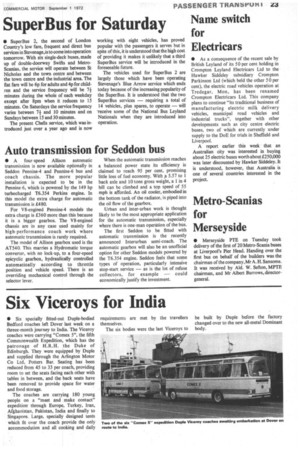Auto transmission for Seddon bus
Page 25

If you've noticed an error in this article please click here to report it so we can fix it.
• A four-speed Allison automatic transmission is now available optionally in Seddon Pennine-4 and Pennine-6 bus and coach chassis. The more popular installation is expected to be in the Pennine-6, which is powered by the 149 hp turbocharged T6.354 Perkins engine. In this model the extra charge for automatic transmission is £480.
For V8-engined Pennine-4 models the extra charge is £360 more than this because it is a bigger gearbox. The V8-engined chassis are in any case used mainly for high-performance coach work where automatic transmission is rarely required.
The model of Allison gearbox used is the AT540. This marries a Hydromatic torque converter, with no lock-up, to a four-speed epicyclic gearbox, hydraulically controlled automatically according to throttle position and vehicle speed. There is an overriding mechanical control through the selector lever.
When the automatic transmission reaches a balanced power state its efficiency is claimed to reach 95 per cent, promising little loss of fuel economy. With a 5.57 to 1 back axle and 10 tons gross weight, a 1 in 4 hill can be climbed and a top speed of 55 mph is afforded. An oil cooler, embodied in the bottom tank of the radiator, is piped into the oil flow of the gearbox.
Urban and inter-urban work is thought likely to be the most appropriate application for the automatic transmission, especially where there is one-man operation of the bus.
The first Seddon to be fitted with automatic transmission is the recently announced Interurban semi-coach. The automatic gearbox will also be an unofficial option for other Seddon models powered by the T6.354 engine. Seddon feels that some types of operation, particularly intensive stop-start service — as is the lot of refuse collectors, for example — could economically justify the investment.


































































































